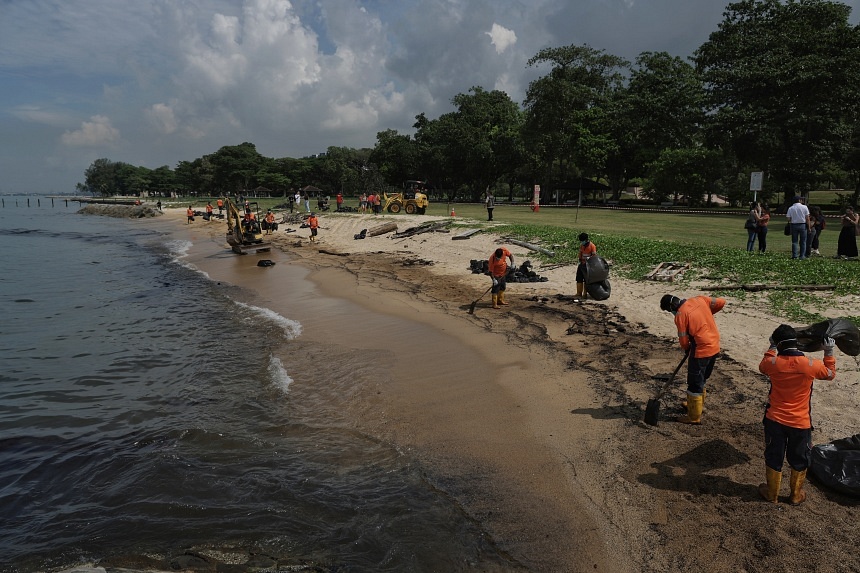SINGAPORE – Researchers in Singapore will be embarking on a 15-month plan to monitor the impacts of the June 14 oil spill on biodiversity in intertidal areas.
This national plan was announced by Minister for National Development Desmond Lee at a marine science workshop held at the National University of Singapore (NUS) on Oct 8.
As part of the monitoring effort, researchers will collect sediment samples from the intertidal zone in coastal areas tarred by the oil spill, said Dr Tan Koh Siang, a principal research fellow at NUS Tropical Marine Science Institute (TMSI).
Dr Tan is part of the research team responsible for the post-oil spill monitoring effort, which will also include scientists from the National Parks Board (NParks), TMSI, St John’s Island National Marine Laboratory, and National Institute of Education.
The researchers will monitor sites including East Coast Park, Labrador Nature Reserve and Sentosa, as well as at beaches that had not been directly affected by the oil spill, including the eastern beaches at Changi Beach Park and Coney Island Park, added NParks.
By retrieving samples of sediment from areas affected and unaffected by the oil spill, researchers will be able to tease out the impacts of the toxic slick on the tiny organisms in the sediment, such as crustaceans, worms and molluscs.
Dr Tan explained that the oil spill could smother organisms and kill them as harmful chemicals from the oil may be released at high concentrations. At lower concentrations, these chemicals may affect their physiology – referring to the ways in which a living organism functions.
“These (organisms) have not really been looked at, so we are interested to see what effects the oil has on these communities that are not visually obvious,” added Dr Tan.
To monitor the impacts of the oil spill on marine biodiversity in intertidal areas, researchers will first obtain and sieve through sediment samples collected from the study sites.
Organisms that are retained on the sieves will be identified and counted to account for the abundance and diversity of different species of invertebrates – creatures without backbones, including small crustaceans, worms and molluscs.
Dr Tan said: “These data will also form the basis for understanding their community structure, which can provide a baseline for future studies on environmental changes when called for.”
News of the post-oil spill monitoring plan comes after the Netherlands-flagged dredger Vox Maxima on June 14 hit a stationary bunker vessel Marine Honour at Pasir Panjang Terminal, causing half of the low-sulphur fuel oil in one of Marine Honour’s tanks, totaling 400 tonnes, to leak into the sea.
The oil was observed to have spread to biodiversity-rich areas along Singapore’s southern coast the next morning, with oil slicks reported in several areas of Singapore, including Sentosa, Labrador Nature Reserve, the Southern Islands, Marina South Pier, and East Coast Park.
The oil continued to spread, and oil was sighted off Changi on June 16.

